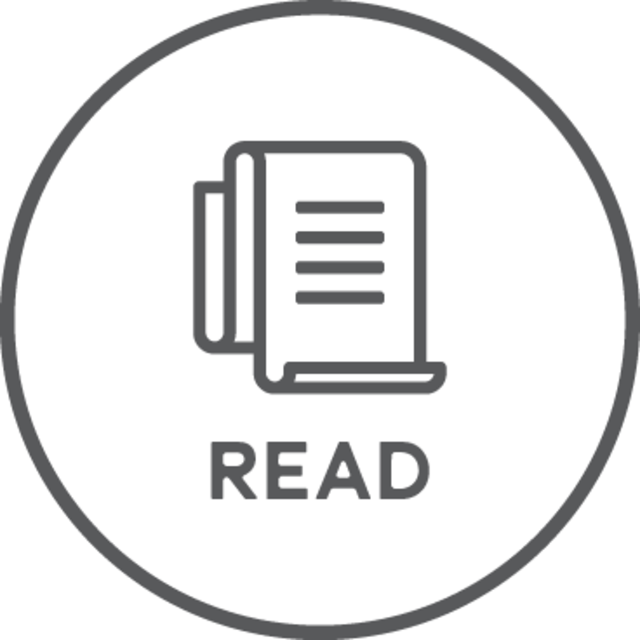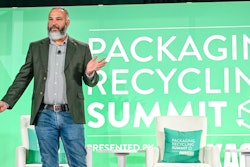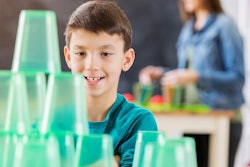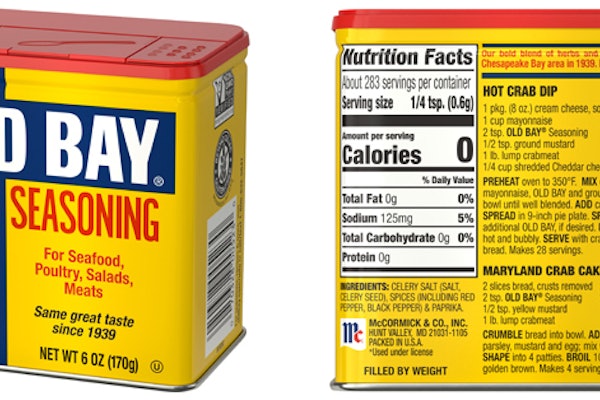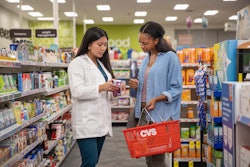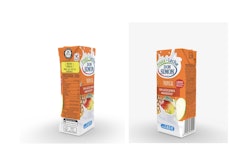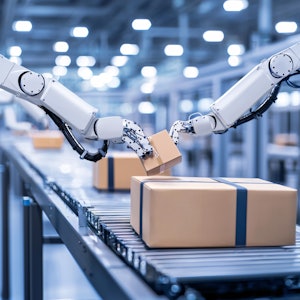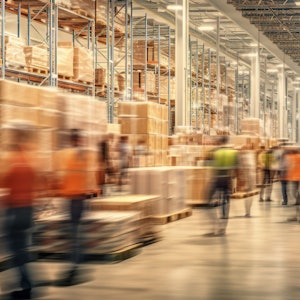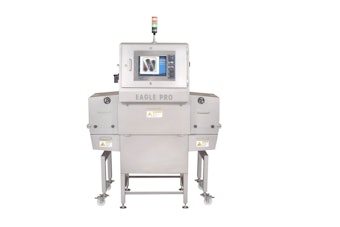Lilián Robayo, Media Director for Latin America PMMI and Editor-in-Chief, Mundo EXPO PACK: Hello, welcome to Coffee with Mundo Expo Pack. Today I bring you a conversation you won't want to miss. We're going to talk about packaging sustainability and innovation with someone who has been leading the way on these topics within one of the most influential companies in the world. I'm talking about Miguel Arvélo, a Mexican national who from Google has driven disruptive and transformative initiatives for the transition toward plastic free packaging. Miguel is the leader of sustainability and packaging innovation at Google. Welcome. We're so glad to have you with us.
Miguel Arvélo, Head of Packaging and Sustainability at Google: Thank you very much for that introduction. It's a pleasure to be here with you, and thank you for trusting me to share a bit more about what we're doing at Google. We're going to have a great time today. Thank you.
Robayo: Exactly. We are going to have fun. Thank you so much. I'd like to start, Miguel by asking you, what was that spark that made you fall in love with the world of packaging?
Arvélo: Well, my introduction to the world of packaging was a bit strange, a bit fortuitous, I would say. I was working in the automotive sector in Mexico, specifically in one of the states with the strongest presence in this industry. And it just so happened that Proctor and Gamble was moving one of its companies from Mexico City to relocate. Its Gillette operation. Proctor and Gamble is a leading company in consumer products, and there is so much to learn within the company. I had exceptional mentors who taught me the fundamentals of packaging engineering, and I have applied those throughout my entire professional career. I could probably say that Gillette is, I believe, a leading presence in the market. In particular, I got very involved in heat ceiling technology for packaging. One of the things I found quite interesting was that usually heat ceiling is something, it's a technology that's applied or activated with heat.
And we were seeing more and more packages opening, which in many cases climate change was causing that disruption. Right? So sustainability became something important in order to try to do something about what we were doing with packaging. Right? Obviously, I was also working a lot with the team in the United States, specifically in Boston. The technology they were looking for was incredible. I remember one of them where we were looking for technologies for completely wireless transfer of electric energy or light, which would help attract a bit more attention from consumers at the point of sale. It wasn't something we launched as mass production throughout the entire supply chain, but we did a couple of tests there directly in Boston, and I found it incredible how packaging can reach that level of technology, and in some way it's possible to make it happen, right? Obviously with its associated cost.
And also I think that about 15 years ago when I was there, we started to really break ground in relation to bioplastics, right? At that time, it was really about starting to see, understand and appreciate how they could actually work specifically for packaging at Gillette. Sustainability, obviously, is something that is and always has been a central issue for me. I have two wonderful children. Definitely, my intention is to leave them a better planet than the one I inherited by creating solutions that are within my reach and being at Google. I think there's a guiding principle that our leader, Ivy Ross has mentioned. She said it, and I took it as something, something very, very well, a vision, really. It is designers solve problems and sustainability is the biggest problem our generation has to solve. So, based on that, we have been working not only to meet the goals we have, which will tell you a bit more about in detail today, but also to uphold our commitment to share that information so that others can benefit from it and achieve their own sustainability goals much more quickly.
Robayo: Fascinating, fascinating. Miguel, and as a Mexican and Latin American, what has it meant for you to lead innovation at a giant like Google, especially considering the significant and meaningful impact you can have in truly inspiring many leaders in CPG packaging in Latin America and around the world?
Arvélo: Thank you. Definitely. It's a great source of pride, satisfaction and an enormous responsibility. Like many places, Latin America has a lot of problems. We have to face a lot of challenges, right, from the education I wanted to, the job opportunities I needed to have to developing that resilience to keep reaching those goals. Today, more than ever, our representation is key. I believe that Mexican, Latin Americans, sorry, bring a resilient mindset and an innate ability to find solutions and achieve goals despite the challenges we face. So it's important that we keep pushing, that we keep representing. For me personally, this is extremely important when it comes to sustainability. We have a great sense of urgency, and we need to be agents of change. I'm inspired by the possibility of fulfilling that role, leading by example, and helping others develop their talent. So being at Google, I have the privilege of working very closely with highly talented, highly motivated, and above all, proactive people to achieve what we set out to do. So definitely collaboration has been what we found to generate a much greater impact. And I look with hope at how these kinds of solutions are becoming a trend in the industry, like guides and sharing so that others can use them this, so that we can, you know, reach our goals much faster. Right?
Robayo: Of course. Of course. Excellent. And I wanted to ask you, Miguel, we all know Google for its internet search engine, but there are many products in the portfolio that probably not everyone is aware of. I'd like you to tell me about those products or what Google's portfolio consists of.
Arvélo: That's one of the questions we usually get. Well, and you are here talking about packaging, and what does that have to do with what Google does? So definitely, I think there are parts of Google or Google products that are much more, you know, more well known, right? Google Cloud, for example. And certainly applications that a lot of people use in schools. Uh, specifically Docs, Slides, Sheets, you know, for making presentations for creating spreadsheets, analytics platforms, marketing, especially ads. When you have a business and you want to promote it, put it on the search engine so people can [give] you feedback, well-known brands like YouTube and Android, which is the operating system used by countless phones. Basically products that help billions of people in their daily lives. On the consumer electronic side, we have the well-known and highly regarded pixel phones, which as of now are just starting to gradually be introduced and made available for the very first time in Latin America.
An incredible camera. The usability and the materials that our industrial design team uses, finishes that are carefully selected. Obviously the integration of our Gemini, artificial intelligence, both in the software and the hardware, truly creates an exceptional user experience. The phones, the pixel watch watches, and also Fitbit technology, which is a very well known brand when it comes to health and wellness. Also the Pixel buds. We've created an entire ecosystem around these products so that people can use the technology and it can help them in their daily lives. Right? Noise cancellation in our Pixel buds. Obviously the integration with Gemini, AI thermostats, Google TV, so you can connect and turn any television into a smart TV and watch your favorite shows. Right? So these are the types of products we've created and that people use.
Robayo: Of course. Really a lot of products that need innovative packaging. Exactly. And you've mentioned on several occasions, Miguel, that at Google, a holistic approach is taken in the design and development of packaging. For you, what does that holistic approach mean? What does it involve, and how have you managed to translate it into developments?
Arvélo: What I mean by a holistic approach is considering all the stages of the packaging's lifecycle from its design, the selection of materials, production, transportation, and finally its use and the end of its useful life. This approach allows us to have a more complete view of the impact of packaging, not just making sure it looks nice on the shelf or that people can use it or the experience of opening it, but also ensuring there is responsibility when the consumer decides to throw away the packaging and that packaging can somehow find its way to be recycled, or those materials can be recovered in some way. We work in collaboration with our suppliers to achieve this. Right? Obviously we use certified materials with responsible sourcing. We include recycled material in our products, um, as well as industrial waste recovered from other industries. Some of these materials are utilized in our molded fiber.
Our molded fiber contains bamboo, which comes from highly responsible and sustainable sourcing practices. We also use a considerable amount of FSC certified fiber as well as recycled fiber and bagasse, the recycled fiber that we use comes from newspapers, specifically from the places where we are producing our products. Basically, these are newspapers that people have stopped reading and then throw away or discard. We add this type of recycled material to the mix in order to also give it a bit of color, something subtle that makes it more easily identifiable as something that can be recycled. And also we use bagasse, which is a byproduct that comes from the cane process, adding another sustainable element to the material. It's material that they are going to throw away anyway, but we use it to give the product a bit more strength. So, just like with those options, we do many other things regarding the materials we use, but all of this is related to the entire lifecycle of the product, and we try to make sure that we have a responsible supply of materials, but also in the end that we can ensure there is a way to recover those materials and return them to the value chain.
Robayo: What you've explained is very clear, a strategy that has clearly produced concrete and highly impactful results. And moving on to another topic that is also very important for Google and packaging inclusion, inclusion in design, embracing difference, right? For you, what does inclusive packaging mean and why is it so important for Google?
Arvélo: Definitely, it's a very important topic nowadays. Inclusive packaging is packaging that takes into account the needs and abilities of all people, including those with visual, motor, or cognitive disabilities. It goes beyond just a focus on simple functionality. It's about ensuring that consumers, regardless of their abilities have access to products and can use them easily, safely, and above all that it's a satisfying experience. So we value, Google deeply values the issue of diversity, and we strive to reflect that in the design of all our products and also in our packaging. We celebrate those differences. And some of the things, some solutions we create are specifically to ensure this. When it comes to our packaging, we conduct evaluations regarding the position of the product in relation to where the packaging is. So we allow for free space for the fingers in some way, something that allows a person to grab the product and be able to remove it, ideally with just one hand, right?
Not everyone has the ability to use both hands to help themselves. Sometimes it might be that you simply have one hand occupied or you just don't have the ability to do it. We try to eliminate any complex movements, the need to pinch with the fingers when opening packages. We try to avoid this as much as possible. It can be a very difficult condition, especially for people, mainly because this condition is related to temperatures or environmental conditions or the person's own health, and it's not always possible to control it. But we also avoid twisting movements in order to prevent wrist problems, as this can be uncomfortable for users with arthritis. Definitely one thing we want to eliminate, or rather we have already eliminated, is the need for tools to open our packages. Our packages are not designed to require any kind of tool, simplifying the entire experience, and, we prioritize one handed opening.
Right. In many of our studies with people, when we are putting proposals on the table, we especially check that they can place the package on their lap, especially if they're sitting, and that they can open everything with just one hand without any problem, take out all the products, and have that freedom so they can, yes, feel confident that their product won't fall while they're opening it, and also have that experience of an easy opening when they're taking the product out of the package. And maybe touching on all of this a lot in relation to motor skills, right? But on the visual side, you work a lot with different textures, mainly to be able to guide people with actionable elements in some way so that they can identify where the label is that they need to open, but all of this through touch points that they will have within the packaging.
So in the end, because of the whole structural aspect, we try in some way to provide a guided reference through the different textures that exist within the packaging, but also on the creative side. We adapt the packaging so that it has a sufficient level of contrast, the correct font size that it is compatible with visual recognition technologies. And also helping people with low vision to be [able to] easily identify the text so they know what the product is or the direct or whatever information they need to know to set it up correctly. Really.
Robayo: Very interesting. Well, I also wanted to ask you, Miguel, from a more collaborative, rather than competitive perspective. Google chose in 2024 to share the knowledge of packaging professionals through some guides you released in the second half of last year called Plastic-Free Packaging Design. Tell us exactly what these guides are and what have been the main impacts and the response from professionals. Yes. Regarding these guides.
Arvélo: We have a commitment, which was to ensure that our packaging would not contain plastics by 2025 by this year. And we worked on that. Since 2020, our whole team has been working to enable different designs, materials, processes. And in the end, we were able to achieve this last year, a year ahead of our original timeline. But based on Google's mission is so to speak, to organize the world's information, to share it, and to make it accessible to everyone.We believe that creating a guide that could help any company, any professional to achieve goals similar to ours, but who might not have the same resources that Google has or simply, it's good to know that the company was able to achieve something, but actually knowing how they did it and how I can implement it myself, we thought that would be much more valuable so that others can break through barriers that often exist internally within companies.
So, our response to that was the creation of this guide. This guide is already in its second edition. We launched our first edition in June, and the second one in August. Basically, the guide is a repository of all the engineering considerations, the materials we developed and used, the suppliers we worked with the process improvements or process changes or elements, success criteria that we used to be able to make this transition from materials with plastic to plastic free materials. The topic of plastic can be one that generates a lot of discussion. And it's not about whether plastic is bad or good at all. Specifically in our design process for our packaging value proposition, we actively promote using packaging made only from paper. However, if you do add plastic elements that help it perform better or prevent it from getting scratched, and so on, you start to create a disruption in the recycling process for that material.
So we need to move toward a mono material or a material that has a much broader value chain in the recycling process, such as fibers, paper fibers, and somehow achieve the same performance we previously had with plastic. That's the challenge we are facing. So many companies have been actively and persistently trying to achieve this goal, but it's not so much about labeling plastic as inherently bad, especially in our specific value chain. Plastic simply didn't fit well, and there was a much better way to do things in order to truly maximize the circular economy of our packaging. Ultimately, it was about finding the most effective and sustainable solution.
Robayo: Miguel, are these guidelines available for anyone who wants to download them? They are, they're free, of course?
Arvélo: Of course. It's a completely open guide. It's 90 pages long. We can maybe add a QR code for people watching the video so they can just scan it or we can also give them a link. So, and yes, we try to each of the in the guide, it's organized by chapters, right? The chapters are based on the different elements we had to develop, the varnishes, the handcuffs, various elements. What was it, what did we need to solve, what were the solutions we developed, and also what are the open issues that our team is still working on? So we definitely believe that we need to pursue a progressive development. It's not about finding a perfect solution. It's about making sure there are steps to achieve what we're aiming for, but it was necessary to share this so that other companies looking for the same similar solutions, at least have a point of reference and don't have to start from scratch.
Robayo: And you don't just talk about, about the achievements, but also about the challenges, right?
Arvélo: Of course. I mean, in the end, it's not a closed case, let's put it that way. Where we've stopped working on this, there are still so many more things we want to do. And another thing is what we're also going to keep doing is that this guide will continue to be updated whenever there are results that are worth sharing with the world. But yes, the intention is that as soon as we start or continue solving many more things, we will keep sharing them. And ideally, our goal with this is also to empower. In the end, we believe that this collaboration in sustainability is more important than trying to compete in this area. We don't need to be competing. We all need to try to, let's say, raise the water level for all the boats, right? So that we're all at the same level because we have a shared mission, right? So ideally, more companies will start to create a bit more of these guides so that others can, can, capitalize on those learnings. And ideally, we can all help each other achieve better sustainability.
Robayo: Of course. And we know that these design guides have already inspired many organizations around the world. You mentioned to me before this interview that the UN there is also a UN initiative together with the video game industry and its packaging. Why don't you tell us about that?
Arvélo: I found it, when, when I was after developing this guide, obviously a lot of people were very interested in learning a bit more about it. And well, Google is very big. Maybe it's something that yes, still impresses me. A contact of a contact basically within Google has been working. This is a contact in Germany who is part of Google is part of an organization called Playing for the Planet. It's an initiative that, as you mentioned, is led by the United Nations Environment Program and aims to mobilize the video game industry to take action against climate change. So there are strategies not only in physical solutions like packaging, but also software solutions, maybe games that are more inspired by environmental care, but also that help raise awareness among players. Basically, it's about empowering players to take action in favor of the planet.
After I had the opportunity to share the guide with my colleague, the insightful and knowledgeable David Bourne, in this forum, which is a working group, particularly focused on packaging and on how to reduce or even eliminate the use of plastics in the video game industry, I was truly inspired, renowned companies, companies that I personally as a passionate gamer myself, genuinely love and deeply admire, you know, in the work and the products they have achieved. And this year I was honored to be able to participate to have a slightly more active role within the group in a position they call co-leader. So in this position, my interest is to start contributing even more to reducing plastic, maybe to develop strategies within the working group and in some way help each other so that we can achieve the goals that each of us has since we are all at different stages of implementation, right? But in some way, Google is trying to encourage us so that we can reach where we want to go in a much easier way.
Robayo: Of course, it's a tangible example of the inspiration you're providing from Google. And I also wanted to ask you about an interesting recent innovation. The new packaging, the new box for the phone, which you mentioned uses a more durable material. Tell us about this packaging and its reduction, for example, of the carbon footprint, not just because of the design, but also because of the materials.
Arvélo: Definitely. We're very excited about this. We were able to, the reason we created a second edition of our guide was exactly because of that. We have been working for a couple of years to come up with another proposal for our packaging design, one that is more aligned with the overall Google brand. We tried to create in some way an iconic packaging, but one that people would recognize or understand as being from Google that represents our values, our, so we looked for something that would minimize, as you mentioned, our environmental impact, effectively protect our products, and also provide that positive experience for users to achieve this. Our intention or our circularity strategy is based on the principle that we want to eliminate all use of plastic so that we can have a bit more control where we currently have the least control.
What does that mean? So when we provide packaging and send out our product, the consumer is going to use it and we'll decide whether they want to recycle it or not. Previously, we had packaging that was white, very similar to what you can see in the industry today, but, some of them are so well made that people, and also at the material collection centers can't tell whether they are actually paper packaging or plastic packaging. And also, since some of them still use that plastic to cover and protect them, at the collection centers, they prefer not to include them for recycling in the pro, in the fiber chain, because it creates disruptions in their process. So in a way, there is already a paradigm which throughout the entire chain, people have to, or people identify these white packages, and we need to find a solution.
Now, what I mean by control is if we manage to remove the plastic from the beginning in some way, we would ensure that at the end of the value chain, if people threw it away, and it reached this fiber process, the material could be recyclable and it could come back as another material later. But we needed to find some way, a material that would allow us to keep innovating with it and continue reducing the weight or the amount of material we use effectively to keep protecting our packaging. So we needed to create a completely new and innovative type of paper, one that in particular would have much greater strength and significantly more elasticity than ever before. We have truly exceptional and remarkable talent within the group. Dr. Zing, he helped us create this exceptionally high performance paper, which is three times stronger compared to what we were using before, and 70% more elastic.
What this innovative material allows us to do is use less of it to cover the product, which enabled us to reduce the total gram. This ultimately translates into less weight for our packaging across the entire portfolio, while at the same time increasing the amount of recycled material in our packaging by using fibers that come from responsible sources, such as the Forest Stewardship Council. This combination of greater strength, less weight, and higher recycled content gives us, as you mentioned, a reduction in our carbon footprint. We transport materials that weigh less, and we help reduce the amount of fuel or basically, the energy needed to move them. There is greater circularity because we increase the use of recycled material in a product that is effective and can have another useful life. We protect this product until the end, even though we have a slightly lighter material, [and] till, the packaging still arrives.
The main, the goal of the packaging is to make sure that the product reaches the consumer's hands and that it arrives in good condition. So that's a top priority. And visually, through different research we've done with users, different user studies, we've found that there's a three to one relationship. If the consumer sees a package and we can show photos, like the ones in the video, people identify these types of packages, the ones that look more natural as recyclable, this helps so that through the very act of throwing it into the recycling bin, people can identify it and put it in the right bin, but it also helps in the value chain with the companies that are collecting the materials, they can identify this material as recyclable and it can actually be recycled.
